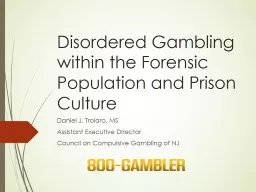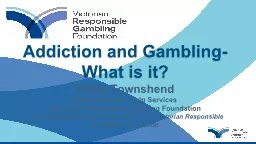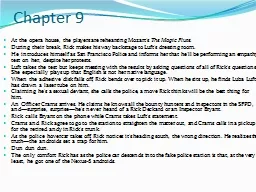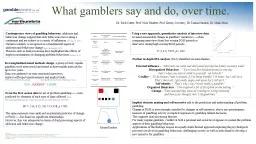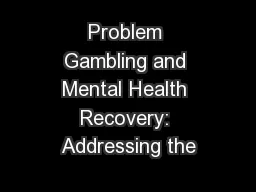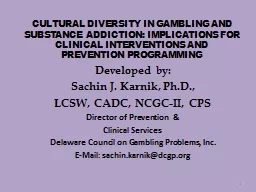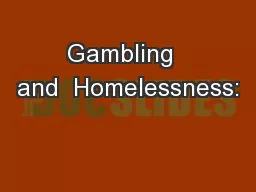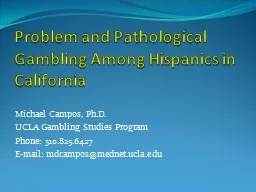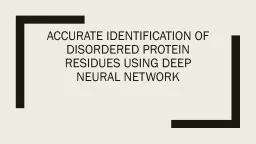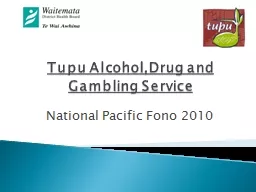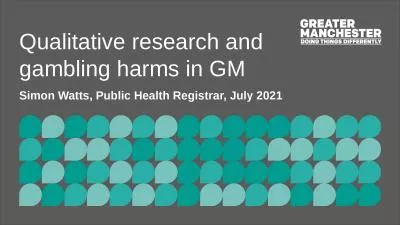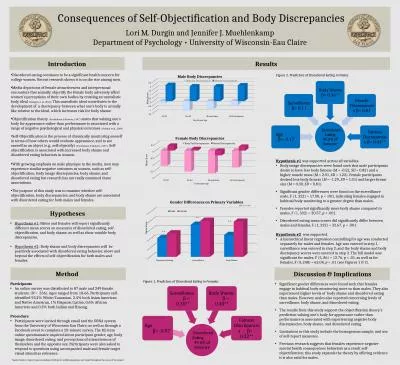PPT-Disordered Gambling within the Forensic Population and Pris
Author : giovanna-bartolotta | Published Date : 2017-08-07
Daniel J Trolaro MS Assistant Executive Director Council on Compulsive Gambling of NJ Agenda Background and overview Warning signs and characteristics Stages and
Presentation Embed Code
Download Presentation
Download Presentation The PPT/PDF document "Disordered Gambling within the Forensic ..." is the property of its rightful owner. Permission is granted to download and print the materials on this website for personal, non-commercial use only, and to display it on your personal computer provided you do not modify the materials and that you retain all copyright notices contained in the materials. By downloading content from our website, you accept the terms of this agreement.
Disordered Gambling within the Forensic Population and Pris: Transcript
Download Rules Of Document
"Disordered Gambling within the Forensic Population and Pris"The content belongs to its owner. You may download and print it for personal use, without modification, and keep all copyright notices. By downloading, you agree to these terms.
Related Documents

